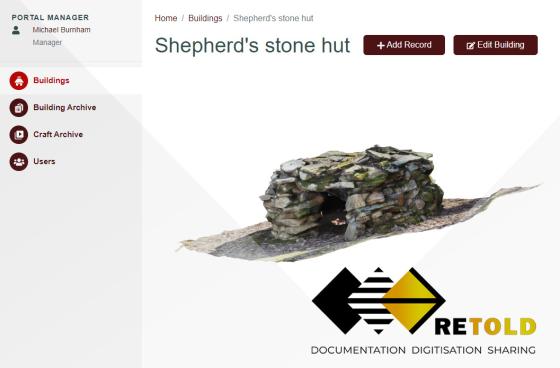RETOLD: Sibiu - Photogrammetry Workshop Wrap-up (Nuwa)

On Tuesday, March 28th, during meeting at Sibiu, Cordula Hansen and Shay Gilna (NUWA) led a session “Introduction to Photogrammetry”. The aim of the workshop was to introduce participants to accessible, practical ways of documenting buildings, objects and environments as 3D models using current mobile and desktop applications.
The exercise will help museum partners develop the skills to prepare data for the - as of yet un-named - RETOLD documentation app. 3D models are particularly useful for capturing medium-sized buildings from multiple view angles. Within the app, the model can be marked with digital points, where more description or images can be added. The model can capture the shape, volume and texture of the building, making it easier to correlate observations in the field to the documentation form.
A short explanation of the principles of 3D graphics was followed by an introduction to photogrammetry capture methods and software. Using their own mobile devices, participants then practised capturing objects and parts of the workshop environment.
Having ready access to capture tools meant that participants could experiment with photogrammetry throughout the stay at ASTRA. A number of models of buildings at ASTRA were created and uploaded to the RETOLD documentation app as tests. Craftspeople at ASTRA also participated in capturing their work, with some currently considering this as a way of showcasing their craft products online.
During our discussion on photogrammetry, we also explored other key aspects of digitization, such as training museum staff in processes related to Documentation Instruments & Strategies, as well as Immersive Media & 3D Storytelling. This included a focus on 2D media, particularly still photography. Still images serve as an effective method for documenting static subjects like tools, environments, or groups of people involved in various processes. In a museum setting, still photography plays a vital role, spanning preservation to education and outreach. Proficiency in photography and videography is also essential for generating 3D models through photogrammetry.
Additionally, the training covered the use of documentary video for craft documentation and outreach. Within the RETOLD project, the preferred format for audiovisual media in craft documentation was a 5-15 minute documentary video. This format is especially relevant in open-air museums, where exhibits often feature dynamic and interactive elements, such as living history displays, natural settings, and craft demonstrations. Insights and needs gathered during the process informed a section of the White Book on digitization. For more details, visit 2D Media: Photography and 2D Media: Video.
In a further workshop at Düppel, these techniques will be refined and documented for use within the RETOLD partner organisations.
